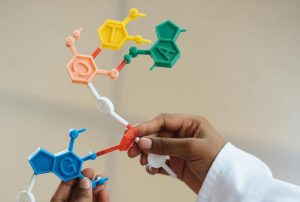When it comes to egg collection and its impact on pregnancy chances, numerous scientific studies have explored egg fertility topic and whether there exists an optimal number of eggs that can produce the best chance of achieving a pregnancy.
The conclusion: more eggs mean the likelihood of more embryos for transfer and, hence, a higher probability of getting pregnant from a single retrieval. However, the health and safety of ovarian stimulation remains pivotal to the treatment plan.
The more eggs available, the better
The number of eggs collected during the oocyte pick-up (OPU) stage has long been a focus for couples hoping to improve their chances of pregnancy through IVF.
But is egg quantity a reliable predictor of pregnancy through IVF?
Fertility experts from IVF Australia, working with the University of New South Wales, explored this question further. The study found that collecting more eggs during IVF results in more healthy embryos available for transfer. This trend holds true regardless of the patient’s age or the amount of hormone stimulation received.
Plus, having more healthy embryos increases the chances of having a baby (live birth) after IVF. These embryos have a higher success rate in leading to successful pregnancies, making them a crucial factor in predicting IVF success.
The study, presented at the 33rd Annual Meeting of the European Society of Human Reproduction and Embryology (ESHRE) in 2017, scrutinized over 700 IVF cycles across three IVF clinics in Australia.
Is there an optimal quantity?
Such views are extensively documented in a British study published in 2011, which reviewed over 400,000 fresh IVF cycles conducted from 1991 to 2008. The study aimed to determine whether the number of eggs retrieved correlates positively with the live birth rate.
Fresh embryo transfer typically occurs three or five days after the retrieval procedure.
The conclusion: the best chance of live birth was seen when around 15 eggs were collected (see table on the left from the study, comparing observed and predicted live birth rates). It started to decline after 18 eggs were retrieved.
Aiming for any higher egg yield beyond the results poses the risk of ovarian hyperstimulation syndrome (OHSS), a potentially severe complication. By establishing a measured approach with a precise optimal number of eggs corresponding to live birth rates, the study helps to mitigate this risk.
While both the IVF Australia and British studies support the importance of egg quantity in IVF success, determining the optimal number of eggs collected remains nuanced.
Several factors must be considered, including the patient’s characteristics, such as ovarian reserves, overall health, and lifestyle. However, the most significant factor is maternal age.
Age
With advancing maternal age, not only are there fewer eggs stored in the ovaries, but the quality of the eggs and embryos produced tends to decline. This decline happens because of various factors related to aging, such as an increased likelihood of genetic abnormalities in the eggs.
Age remains the single most important determinant for any potential success of treatment. The likelihood of a live birth decreases with fewer eggs and the potential for reduced competence, as discussed in the 2011 study.
Egg Quantity or Quality?
Egg quality can make a difference when it comes to IVF success. Eggs and embryos connect directly: high-quality eggs produce high-quality embryos.
When embryos come from high-quality eggs, they have the best chance to grow and implant successfully inside the uterus. For an embryo to survive the early stages of development and ultimately result in a successful pregnancy, it must be strong and high-quality.
Virtus Health’s Success Rates Measurement
While many studies evaluating IVF treatments often use the number of eggs retrieved as a predictor of live birth outcomes, it’s important to note that not every pregnancy results in a live birth.
To offer a more accurate perspective on your likelihood of success following each embryo transfer, we provide our success rates based on clinical pregnancies per transfer and live births per embryo transfer. Clinical pregnancies are confirmed by a blood test and ultrasound scan, typically conducted around 6-8 weeks per embryo transfer.
Health and safety should always be the top priority, surpassing consideration for a high number of eggs, risking serious complications from ovarian hyperstimulation. Any efforts to increase the yield of oocytes should be undertaken cautiously, with an individualized approach tailored to your specific circumstances, as discussed with your fertility specialist.






